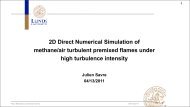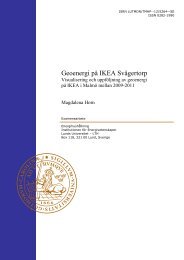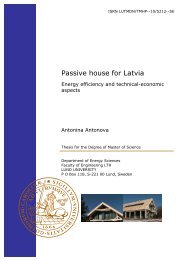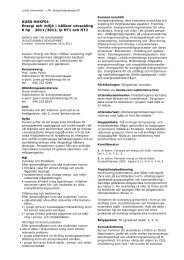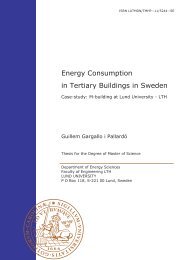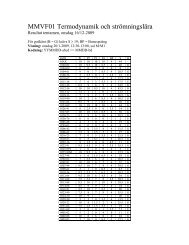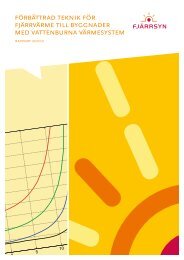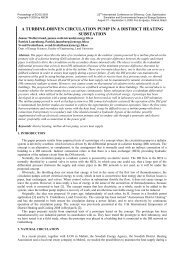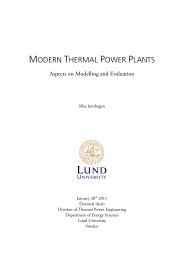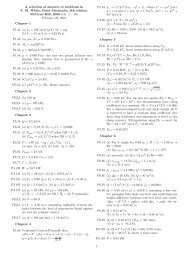Thesis for degree: Licentiate of Engineering
Thesis for degree: Licentiate of Engineering
Thesis for degree: Licentiate of Engineering
You also want an ePaper? Increase the reach of your titles
YUMPU automatically turns print PDFs into web optimized ePapers that Google loves.
Figure 4.12: Mole fraction distribution in the middle <strong>of</strong> the anode along the flow direction <strong>for</strong> SF = 1<br />
(left) and SF = 5 (right).<br />
Only the two extreme cases are shown here to visualize the effect <strong>of</strong> a change in SF. In Figure<br />
4.12 the mole fraction <strong>for</strong> SF=1 can be viewed to the left and SF=5 to the right. It is<br />
important to verify that there is a sufficient amount <strong>of</strong> H 2 O throughout the cell or else no<br />
efficient reaction will occur and there will be a risk <strong>for</strong> carbon deposition. In the figure <strong>for</strong> the<br />
mole fractions, it can be seen that a drop <strong>of</strong> H 2 O exists slightly downstream the inlet. Instead<br />
<strong>of</strong> putting all focus on the inlet mole fraction <strong>of</strong> H 2 O, one should also consider whether there<br />
is a sufficient amount to handle this drop and adjust the inlet mole fraction subsequently. This<br />
mole fraction drop increases when a faster reaction rate is applied which was shown in the<br />
previous section.<br />
Figure 4.13: Reaction rate distribution in the middle <strong>of</strong> the anode <strong>for</strong> SF = 1 (left) and SF = 5 (right).<br />
49



